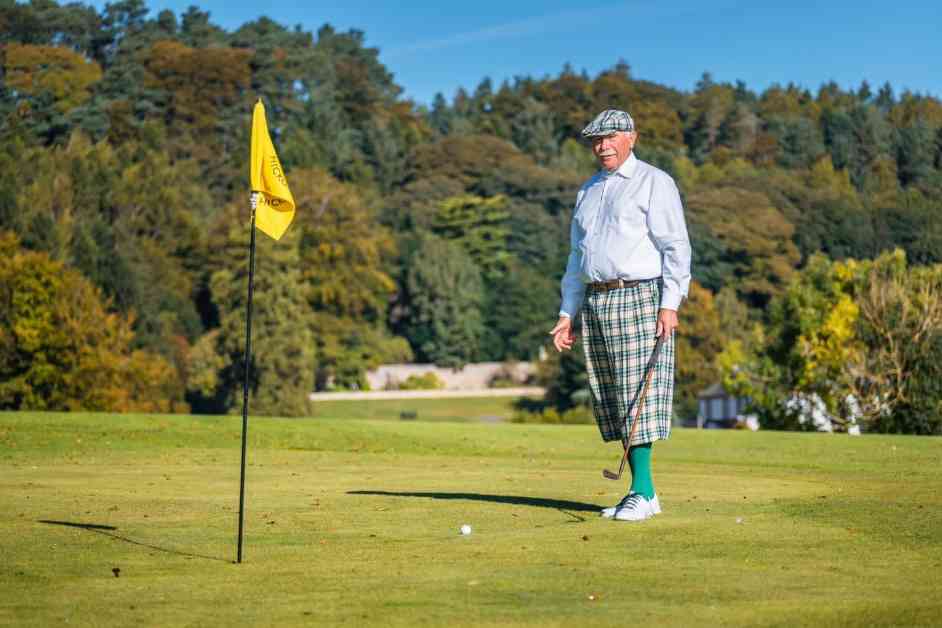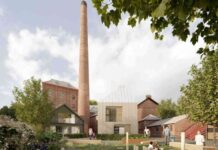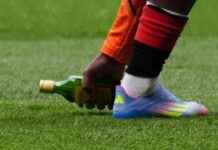Believed to be the only pure hickory golf course in Europe, the greens and collars at Kingarrock in Fife are hand-cut, with fairways and tees mowed using 1920s-style trailed gangs. No fertilisers or artificial irrigation are used anywhere on the course, which provides a more natural, less manicured, and therefore more authentic feel.
Originally created by and for the Sharp family, today the 9-hole course and surrounding estate is owned by the National Trust for Scotland. Visitors are issued with five original 1900s hickory clubs: a spoon, a driving iron, a mid-mashie, a mashie niblick, and a putter, then guided through the ways of Edwardian golf.
It is open from March through to the end of October and welcomed more than 1,000 golfers last season. Manager Dave Allan says numerous tour professionals have played the course over the years, but no one has ever broken the course par of 34.
How did the Kingarrock course come to be?
The Hill of Tarvit estate where the course is located was purchased in 1906 by Frederick Sharp, an industrialist and investment banker from Dundee. The family made their money in the Dundee jute industry.
Frederick and his wife Beatrice had a son, Hugh, and a daughter, Elisabeth. Both Frederick and Hugh were avid golfers and senior members of the R&A in St Andrews, so the estate purchase was also convenient for golfing there.
After WWI, when Hugh was down in London learning to become an investment banker, he resided beside a golf course and came back to the family home with the idea of building their own course in the grounds of Hill of Tarvit. The course was completed and opened in the mid 1920s. It was private, but workers were allowed to play.
How did it come to be owned by the National Trust for Scotland?
Elisabeth was the last member of the family to die in 1948 of cancer at the age of 38. Before her death, she pledged the whole estate to the National Trust for Scotland to maintain, as it does today.
Unfortunately, the golf course had vanished in WWII, due to the ground being used for agriculture, and stayed lost for almost 50 years.
It was reinstated when a St Andrews resident and R&A member, David Anderson, visited and noticed the course contours still visible. He enquired with the staff at the time to learn the history, the approached the trust and got an agreement to reinstate the course, which eventually reopened in 2008.
It had to be reconfigured for safety reasons and was redesigned by Peter McEvoy, Walker Cup captain, to the layout in use today. David subsequently retired in 2014 and the National Trust has taken full responsibility for the facility since that date.
What does it mean to be an “authentic” hickory course?
When the course was reopened it was decided to retain it as a hickory course from the 1920s, with no modern equipment allowed. We believe this is now the only pure hickory golf course left in Europe.
The award-winning course is professionally maintained, with nothing artificial used. The fairways are cut with old-fashioned mowers, for example, and wild flowers bloom in the rough as they would have in the 1920s. It is shorter than a modern course with a par of 34 which, incidentally, has never been broken since the course reopened.
Dave Allan (Image: National Trust for Scotland)
What’s the equipment like?
All the clubs which are supplied by us for use on the course are from the period when hickory shafted clubs were popular are. They are genuine antiques from 1880s through to the 1920s, and the tees used are small wooden tees patented in 1925.
The only allowance we have is the balls, which are modern soft feel balls as old balls are too valuable to play with.
Is hickory golf more difficult than the modern game?
Interest in hickory golf has increased in recent years, both on the continent and in the United States, with about 70% of our business coming from the US. Most states in America now hold their own hickory championships each year.
It’s not more difficult to play than modern golf, but the technique is different. It allows you to appreciate how good people like Bobby Jones was using the hickory equipment.
Modern golf is power, hitting the ball as hard, fast and as far as you can; hickory is more timing and finesse. It also sounds totally different when playing.
Access the entire series of Around the Greens here.
































